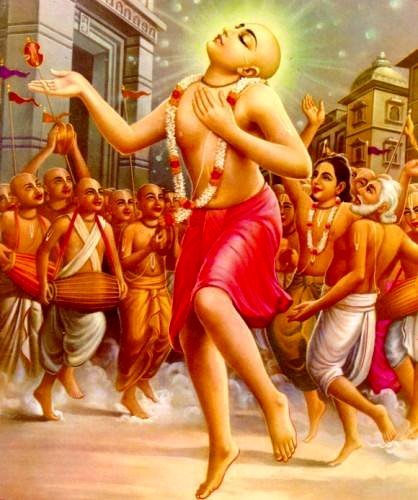|
Philosophy of Sri Chaitanya – the Achintya Bheda-Abheda
Sri Chaitanya Mahaprabhu was the chief proponent of the Achintya Bheda Abheda (Inconceivable Difference/One-ness) Vedanta school and the Gaudiya Vaishnavism tradition within Hinduism. He was born at Mayapur near Navaidip, district Nadia (75 miles from Kolkata) West Bengal, who lived during 1486-1533. The highlights of his philosophy are as under: Sri Krishna, the Supreme Being:
Three Aspects of Sri Krishna’s Potency (Shakti): The Shakti has three aspects – Svarupa Shakti (Innate potency), Tatastha Shakti (Peripheral or marginal potency) also called as Jiva Shakti and Bahiranga Shakti (Extraneous Potency). The function of the shaktis of Sri Krishna is to carry out His will and contribute to His sportive manifestations, which form the expression of His essential nature of Bliss.
Bondage of Soul (Jiva): Being in contact with both, the Jiva gets into the state of bondage (Samsara) when Bhairanga Shakti dominates over him and makes him purely body-minded, but by the practice of devotion and grace of the God, the Jiva is enfolded by the Svarupa Shakti, he attains to his higher spiritual evolution.
Manifestations of Potency of Supreme Being: Svarupa Shakti is the most intimate and fundamental nature of Bhagavan. It has three aspects known as Sandhini, Samvit, and Hladini, corresponding to the Supreme Being as Sat (Existence), Chit (Consciousness) and Ananda (Bliss).
Liberation of Jiva:
Reference: Bhakti Schools of Vedanta – by Swami Tapasyananda, Sri Ramakrishna Math, Chennai.
0 Comments
Leave a Reply. |
Archives
July 2024
Categories |

 RSS Feed
RSS Feed